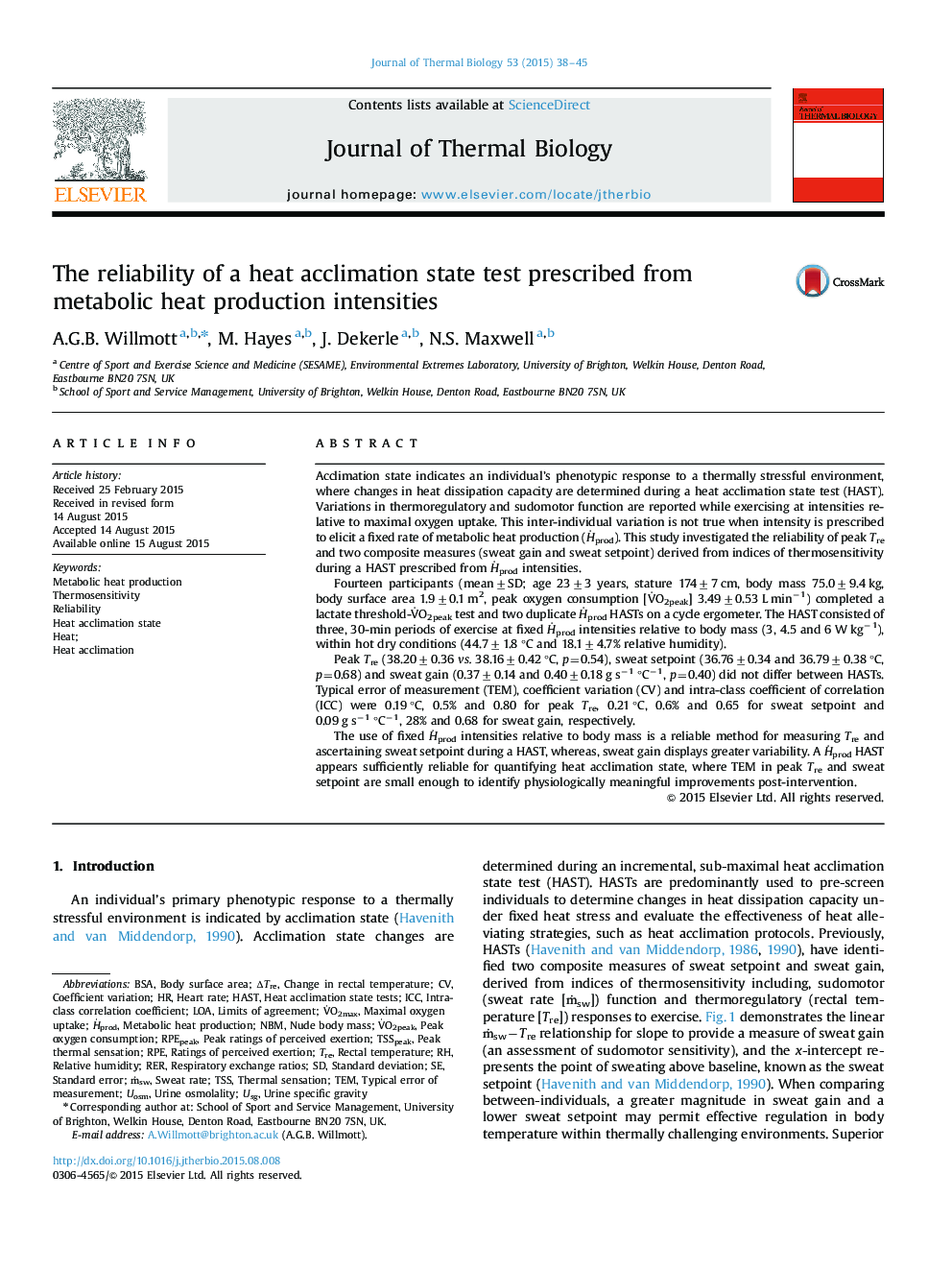| Article ID | Journal | Published Year | Pages | File Type |
|---|---|---|---|---|
| 2842775 | Journal of Thermal Biology | 2015 | 8 Pages |
•A new heat acclimation state test using metabolic heat production intensities.•This new heat acclimation state test provides reliable physiological measures.•A reliable 0.2 °C typical error of measurement in sweat setpoint occurred.•Sweat gain was more variable than sweat setpoint due to measurement error.
Acclimation state indicates an individual’s phenotypic response to a thermally stressful environment, where changes in heat dissipation capacity are determined during a heat acclimation state test (HAST). Variations in thermoregulatory and sudomotor function are reported while exercising at intensities relative to maximal oxygen uptake. This inter-individual variation is not true when intensity is prescribed to elicit a fixed rate of metabolic heat production (Ḣprod). This study investigated the reliability of peak Tre and two composite measures (sweat gain and sweat setpoint) derived from indices of thermosensitivity during a HAST prescribed from Ḣprod intensities.Fourteen participants (mean±SD; age 23±3 years, stature 174±7 cm, body mass 75.0±9.4 kg, body surface area 1.9±0.1 m2, peak oxygen consumption [V̇O2peak] 3.49±0.53 L min−1) completed a lactate threshold-V̇O2peak test and two duplicate Ḣprod HASTs on a cycle ergometer. The HAST consisted of three, 30-min periods of exercise at fixed Ḣprod intensities relative to body mass (3, 4.5 and 6 W kg−1), within hot dry conditions (44.7±1.8 °C and 18.1±4.7% relative humidity).Peak Tre (38.20±0.36 vs. 38.16±0.42 °C, p=0.54), sweat setpoint (36.76±0.34 and 36.79±0.38 °C, p=0.68) and sweat gain (0.37±0.14 and 0.40±0.18 g s−1 °C−1, p=0.40) did not differ between HASTs. Typical error of measurement (TEM), coefficient variation (CV) and intra-class coefficient of correlation (ICC) were 0.19 °C, 0.5% and 0.80 for peak Tre, 0.21 °C, 0.6% and 0.65 for sweat setpoint and 0.09 g s−1 °C−1, 28% and 0.68 for sweat gain, respectively.The use of fixed Ḣprod intensities relative to body mass is a reliable method for measuring Tre and ascertaining sweat setpoint during a HAST, whereas, sweat gain displays greater variability. A Ḣprod HAST appears sufficiently reliable for quantifying heat acclimation state, where TEM in peak Tre and sweat setpoint are small enough to identify physiologically meaningful improvements post-intervention.
